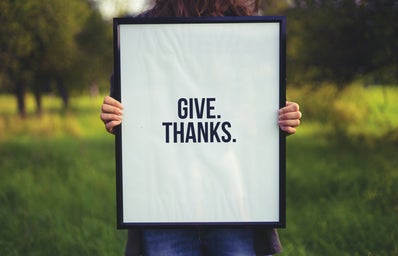1. Almost everything we know about the “first” Thanksgiving comes from a letter written by Governor William Bradford.
Fellow settler Edward Winslow also wrote about the event during the 1640’s. “All the summer there was no want… many afterwards [wrote] largely of their plenty here to their friends in England, which were not feigned but true reports.”
Plymouth had its hardships, but the harvest of 1621 was plentiful and left the settlers wanting for little, thanks in large part to the help of the ancestors of what are now the Wampanoag peoples. However, besides stories passed down through the tribe, this is the only contemporary reports on what actually happened that day, which has led to controversy over whether the story we have of the “first” Thanksgiving is anything more than a nice story devised by some quick thinking politicians.
One of the stories that have gained traction is that the feast wasn’t planned as a show of unity. Colonists, celebrating their successful harvest, were shooting guns in the air and generally making a lot of noise, leading the Wampanoag chief Massasoit to go investigate with a group of his warriors. When the colonists explained that they were just celebrating, the Chief stayed. One thing is certain: the colonists were certainly celebrating, and the Wampanoag were there, but chances are it wasn’t planned as a gesture of unity.
Courtesy: Dave Granlund
2. In 1863, in the midst of the Civil War, President Abraham Lincoln declared that a national Thanksgiving Day should be held every November.
The decision came largely as a response to a national campaign by magazine editor Sarah Josepha Hale, who is also famous for writing “Mary Had a Little Lamb.” The holiday was first formalized in 1817 by New York, and though several other states followed, there was no consensus on which day the holiday should be celebrated.
Courtesy: Amazon
Several other presidents declared days of thanksgiving for various reasons, including George Washington, John Adams and James Madison, but the tradition stretches back through the American Revolution, as the Continental Congress designated several days of thanksgiving each year. Hale campaigned for nearly 40 years before Lincoln agreed to her request and nationalized the American tradition.
3. Speaking of Hale, Americans can thank her for traditional Thanksgiving fare like stuffing, pumpkin pie, cranberries, sweet potatoes, mashed potatoes and even turkey.
It’s almost certain that none of these foods were served at the “original” Thanksgiving in Plymouth. The settlers probably ate deer, small birds, corn and fish, although there are conflicting accounts of wild turkey being present at the feast. But during Hale’s campaign, some of her writings were instructions on how to properly celebrate Thanksgiving, including recipes.
4. Speaking of turkey and American mythology, a popular Thanksgiving fun fact is that Benjamin Franklin wanted the turkey to replace the bald eagle on the seal of the United States.
As the story goes, Benjamin Franklin loved the turkey so much that he wanted it to be the national symbol of the fledgling nation.
Courtesy: Slate
Strictly speaking, this isn’t true. However, Benjamin Franklin did write a letter to his daughter where he considered the respectability and morality of the Turkey and the Bald Eagle (which he calls the King Bird): “For my own part I wish the Bald Eagle had not been chosen the Representative of our Country. He is a Bird of bad moral Character. He does not get his Living honestly… For the Truth the Turkey is in Comparison a much more respectable Bird, and withal a true original Native of America… He is besides, though a little vain & silly, a Bird of Courage, and would not hesitate to attack a Grenadier of the British Guards who should presume to invade his Farm Yard with a red Coat on.”
Here’s to hoping I didn’t rain on your Macy’s Thanksgiving Day Parade, but one has to admit that the truth is significantly more amusing than the fiction.


